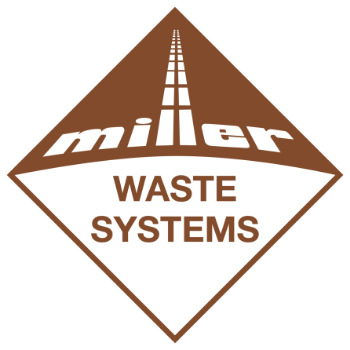Food waste is an ongoing issue in Canada. Every year, Canadian households and businesses toss away millions of tonnes of edible food. This not only results in financial losses, but the loss of resources that go into planting, harvesting, producing, packaging, and transporting of food, including land, water, and energy. Mitigating the impacts of food waste involves reducing food at the source and ensuring we dispose of unavoidable waste properly.
What are the causes of food waste and loss?
1. At the Household Level
Some food waste, including peels, eggshells, and coffee grounds is inevitable – however, the majority (60%) of household food waste is avoidable. 47% of food waste and loss happens in Canadian households because of improper storage, poor planning, overbuying, and misreading labels.

2. At the Commercial Level
20% of food waste and loss occurs at the food processing level, usually as the result of inefficient system design, inadequate quality control, imprecise forecasting, contamination, and recalls. 1

According to some estimates, almost 5 million tonnes of food ($21 billion worth) is lost or wasted during food processing and manufacturing.2 Retailers can be left with a surplus of food if the appearance of produce doesn’t meet certain standards. Fruit and vegetables might be tossed if they’re evenly shaped or off-colour and must also be discarded when they’re recalled, returned, or not sold before the expiry date.
Clearly, expired, contaminated, damaged, or recalled food cannot be donated for health and safety reasons. There can be barriers preventing businesses from donating edible food waste, too, including concerns about legal liability, lack of financial benefit, corporate policies that limit or discourage donation, ineffective co-ordination between food manufacturers and food rescue organizations, and lack of information about the logistics of donation.
However, even when donation is not feasible, there are other ways to recover its value, and it all starts with putting waste in the right place.
Why shouldn’t food waste go to landfills?
Simply put: we’re running out of space! According to Ontario’s 2023 State of the Environment Report, the province’s landfills can only support 10 to 13 more years of waste and food waste.3
Then, there are the environmental impacts to consider. When sent to the landfill, organic waste is buried under other layers of trash and cut off from air and light. As it decomposes in the absence of oxygen, it releases methane into the atmosphere, a greenhouse house that experts estimate to be 25 times more potent than carbon dioxide. To put things in perspective, the impact of 50 million tonnes of food waste is equivalent to 9.8 million tonnes of carbon dioxide, or the emissions of 2.1 million cars!
However, when we capture, combust, and convert methane into another energy source, we can limit its negative impact on the environment while reducing our reliance on fossil fuels. This is where industrial anaerobic digestion (AD) facilities come in.
Unlocking the value of organic waste at AD facilities

Anaerobic digestors at Miller Waste’s green facility, Escarpment Renewables
When municipalities and businesses send their organic waste to anaerobic digesters, we can not only reduce the total amount of methane emissions but capture and re-use the food’s ample stores of energy and nutrients.
Food is separated from its packaging and other contaminants, pasteurized, and pumped into large vats, where it will decompose and produce methane. Specialized equipment will capture and transfer the methane to a combined heat and power generator to produce electricity for the local power grid.
Another byproduct of anaerobic digestion is a liquid called digestate that can be applied to crops as organic fertilizer. Digestate includes the same macro-nutrients as traditional fertilizer – nitrogen, phosphorus, and potassium. However, it also contains a wide variety of micro-nutrients and trace elements that many synthetic fertilizers lack, including sulfur, magnesium, and calcium.

Amending soil with digestate helps farmer generate plentiful yields, which re-enter the marketplace as healthy, delicious food.
When we purpose food waste as sustainable energy, the good of today become the resources of tomorrow. What looks like irrecoverable waste is a treasure trove of nutrients and energy that, when properly treated and returned to the marketplace, can help power homes and businesses, improve the quality of our water and air, and help farmers grow nutritious food.
To learn more, check out Miller’s organic product destruction solutions here and read more about anaerobic digestion at Escarpment Renewables.
